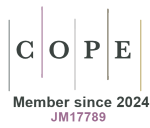Most read articles by the same author(s)
- Richéal M. Burns, Jose Leal, Jane Wolstenholme, Ciaran O’Neill, Frank J. Sullivan, Frances J. Drummond, Linda Sharp, The Burden of Healthcare Costs Associated with Prostate Cancer in Ireland , Global and Regional Health Technology Assessment: Vol. 4 No. 1 (2017): January-December 2017









